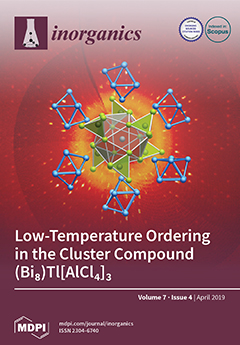The catalytic cycle of the oxygen-evolving complex (OEC) of photosystem II (PSII) comprises five intermediate states S
i (
i = 0–4), from the most reduced S
0 state to the most oxidized S
4, which spontaneously evolves dioxygen. The precise geometric
[...] Read more.
The catalytic cycle of the oxygen-evolving complex (OEC) of photosystem II (PSII) comprises five intermediate states S
i (
i = 0–4), from the most reduced S
0 state to the most oxidized S
4, which spontaneously evolves dioxygen. The precise geometric and electronic structure of the S
i states, and hence the mechanism of O–O bond formation in the OEC, remain under investigation, particularly for the final steps of the catalytic cycle. Recent advances in protein crystallography based on X-ray free-electron lasers (XFELs) have produced new structural models for the S
3 state, which indicate that two of the oxygen atoms of the inorganic Mn
4CaO
6 core of the OEC are in very close proximity. This has been interpreted as possible evidence for “early-onset” O–O bond formation in the S
3 state, as opposed to the more widely accepted view that the O–O bond is formed in the final state of the cycle, S
4. Peroxo or superoxo formation in S
3 has received partial support from computational studies. Here, a brief overview is provided of spectroscopic information, recent crystallographic results, and computational models for the S
3 state. Emphasis is placed on computational S
3 models that involve O–O formation, which are discussed with respect to their agreement with structural information, experimental evidence from various spectroscopic studies, and substrate exchange kinetics. Despite seemingly better agreement with some of the available crystallographic interpretations for the S
3 state, models that implicate early-onset O–O bond formation are hard to reconcile with the complete line of experimental evidence, especially with X-ray absorption, X-ray emission, and magnetic resonance spectroscopic observations. Specifically with respect to quantum chemical studies, the inconclusive energetics for the possible isoforms of S
3 is an acute problem that is probably beyond the capabilities of standard density functional theory.
Full article





